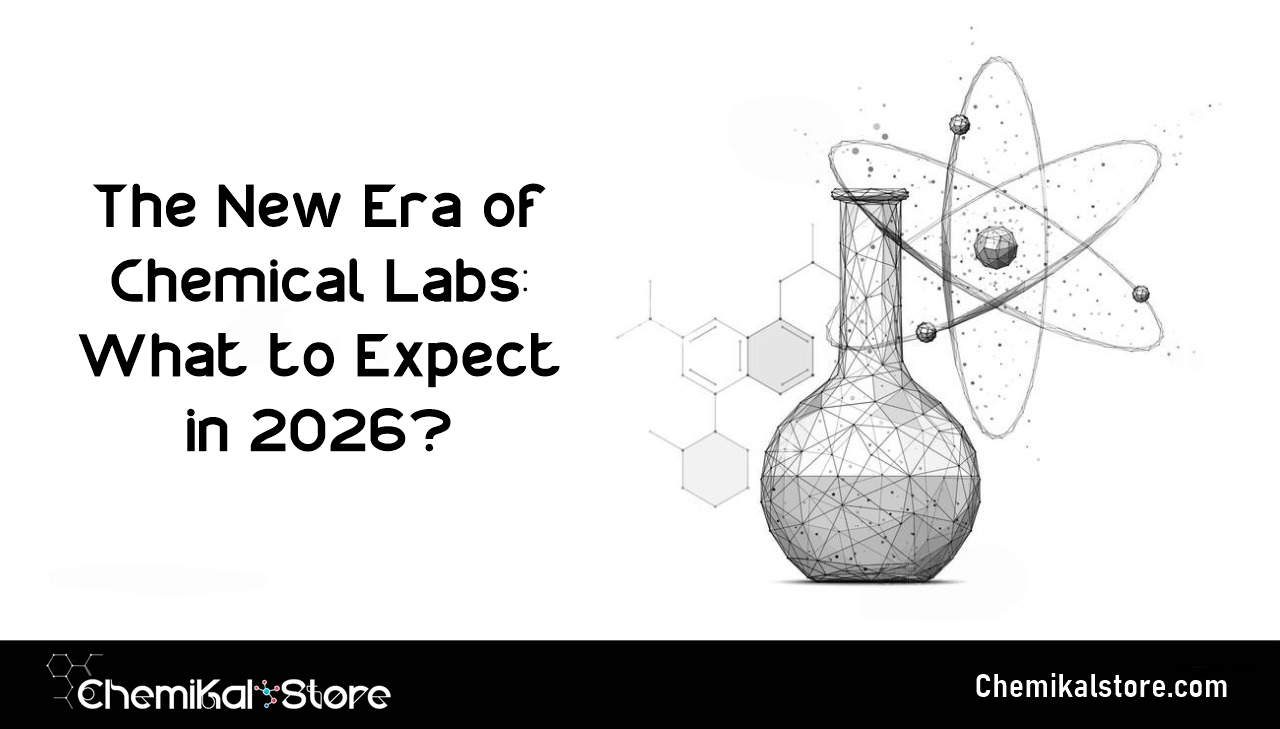The landscape of chemical laboratories is undergoing a dramatic transformation. By 2026, cutting-edge technologies, sustainability initiatives, and digital integration will redefine how research, quality control, and innovation are conducted in chemical labs worldwide. This blog explores the trends, technologies, and opportunities shaping the chemical labs of 2026.
Lab 4.0 refers to the integration of digital technologies, automation, and artificial intelligence (AI) into laboratory workflows. The new generation of labs will feature:
-
with robots and cobots
-
for seamless collaboration
-
for faster, more accurate results
-
via smartphones and tablets
-
: Automated workflows reduce manual labor and speed up processes.
-
: Robotics and AI minimize human error and enhance reproducibility.
-
: Automation reduces exposure to hazardous chemicals and repetitive tasks.
| Technology | Description | Impact on Labs |
|---|---|---|
| Robotics & Cobots | Automated sample prep, pipetting, mixing | Higher throughput, less manual work12 |
| AI & Machine Learning | Data analysis, experiment optimization | Faster discovery, predictive insights43 |
| Cloud Computing | Centralized data storage and sharing | Global collaboration, secure access14 |
| Microfluidics | Lab-on-a-chip diagnostics | Miniaturization, rapid testing5 |
| IoT & Smart Sensors | Real-time monitoring of lab equipment | Preventive maintenance, safety67 |
Chemical labs in 2026 will prioritize sustainability by:
-
Using bio-based, biodegradable, or recyclable polymers
-
Adopting energy-efficient equipment
-
Implementing waste reduction and recycling programs
-
Developing catalysts for CO₂ capture and conversion to address climate change
-
: Stricter environmental regulations demand greener practices.
-
: Companies are expected to minimize their ecological footprint.
-
: Green chemistry opens new avenues for product development.
Automation will handle repetitive and hazardous tasks, freeing up researchers to focus on creative and complex problem-solving. Robots and cobots will work alongside humans, improving safety and efficiency without replacing the need for skilled scientists.
Lab professionals will need to be proficient in:
-
Data analysis and digital tools
-
Managing automated systems and robotics
-
Understanding AI-driven workflows
-
Implementing sustainable practices
| Lab/Event Name | Location | Focus Area | Dates/Status |
|---|---|---|---|
| Chemtech World Expo 2026 | Mumbai, India | Chemicals, Biopharma, Process Industry | Feb 3–6, 2026910 |
| ChemProTech India 2026 | India | Chemical plant & equipment, process tech | 202611 |
| Lab Indonesia 2026 | Indonesia | Future lab technology, chemicals | 202612 |
| Eco Green Labs India Pvt. Ltd. | Andhra Pradesh, India | Food, agro, and environmental testing | Authorized till 202613 |
| FICCI Research and Analysis Centre | New Delhi, India | Food product analysis, chemical testing | Authorized till 202513 |
-
Adoption of self-driving labs integrating AI, robotics, and digitalization for autonomous R&D
-
High demand for impurity and contaminant standards to meet stricter regulations
-
Expansion of molecular diagnostics and lab-on-a-chip technologies for rapid, precise testing
-
using IoT for real-time monitoring and predictive maintenance
-
through cloud-based platforms and digital data sharing
The chemical labs of 2026 will be smarter, greener, and more connected than ever. By embracing automation, digitalization, and sustainable practices, these labs will lead the way in scientific discovery, safety, and efficiency. Prepare your laboratory today to thrive in the new era of chemical innovation.



 Newnik Fingertip Pulse Oximeter with Audio
Newnik Fingertip Pulse Oximeter with Audio 








